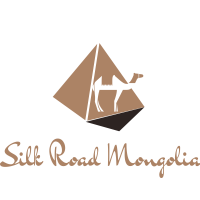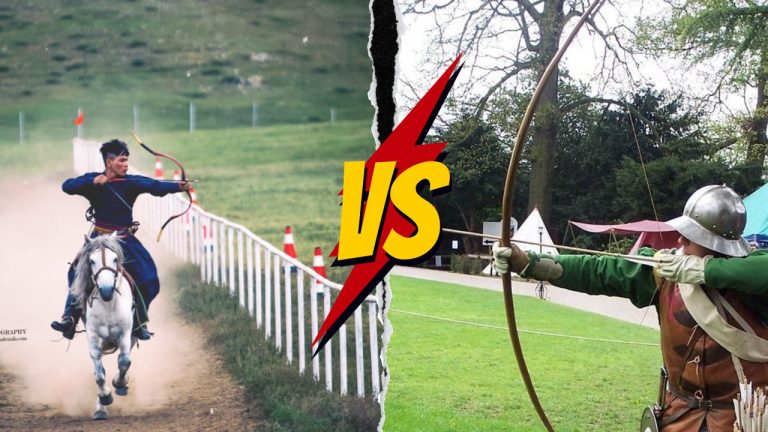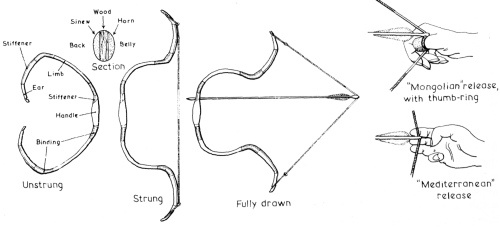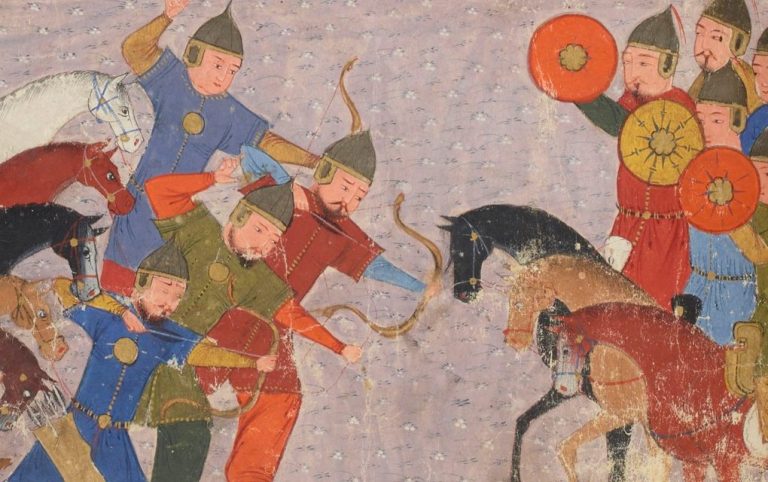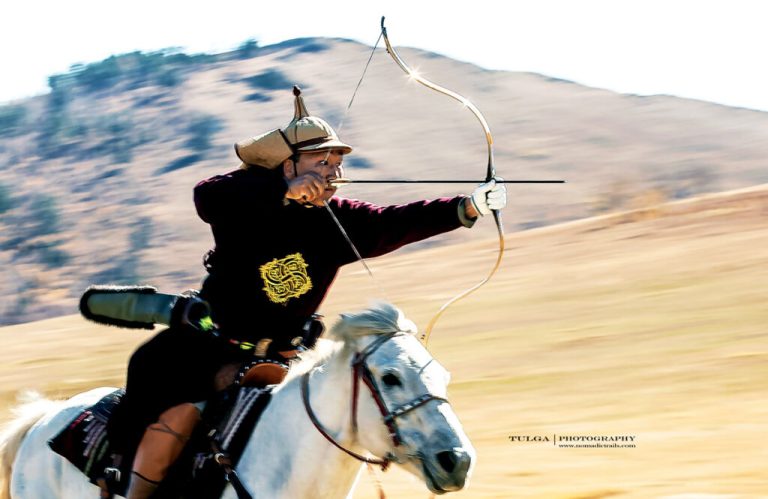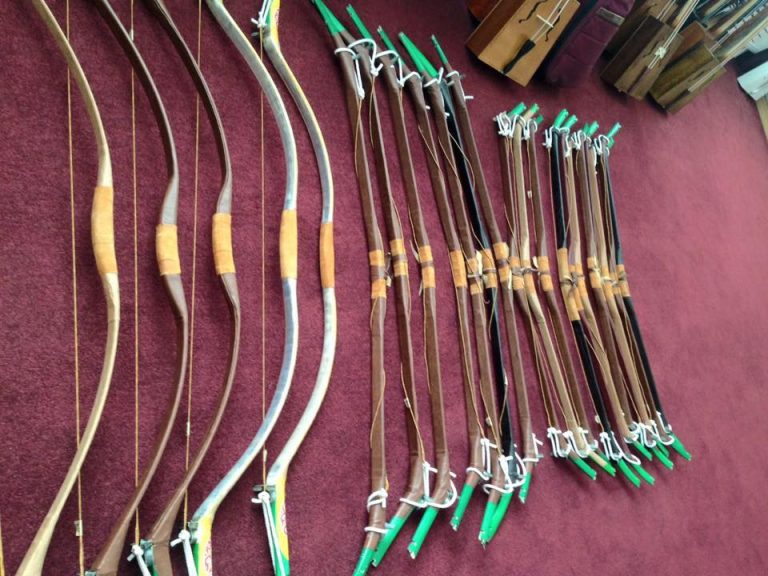The Mongols were known for their effective use of the composite recurve bow, a powerful and compact bow design that played a significant role in their military success. The Mongol bow was recurve-shaped, meaning that the tips of the bow curved away from the archer, which allowed for a more powerful and efficient shot.
It was compact enough to be used on horseback and given its design and additional speed when riding a horse, it was a deadly weapon that was feared during the Middle Ages.
Also Read: English longbow vs Mongolian bow
Why Mongols Used a Recurve Bow?
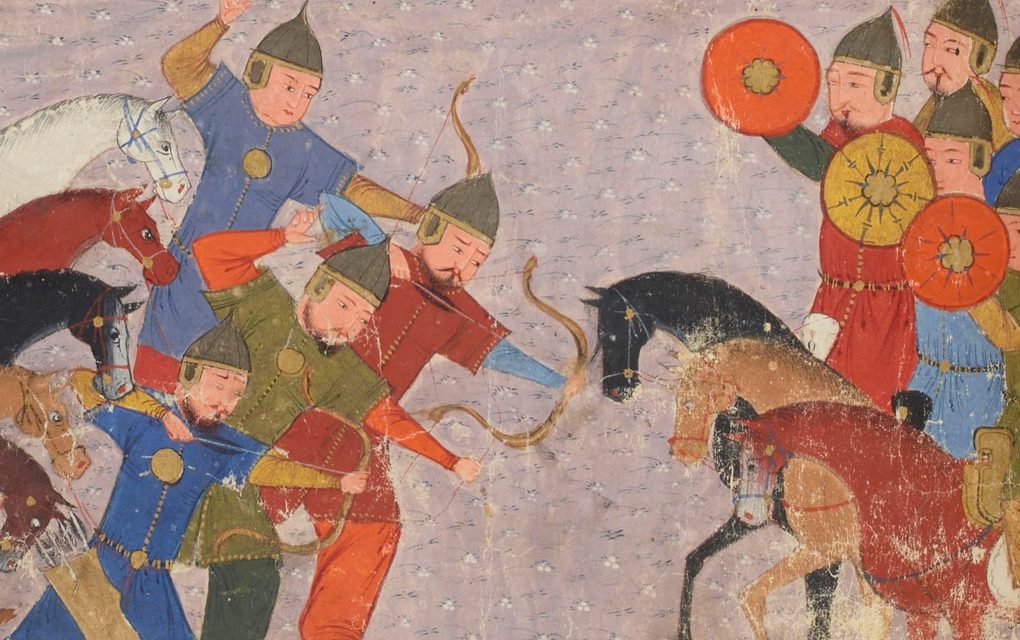
The choice of the recurve bow by the Mongols was deeply intertwined with their cultural and historical context. As nomadic horsemen of the Eurasian steppes, the Mongols relied heavily on their skills in archery for hunting, protection, and warfare. The recurve bow, with its compact and curved design, perfectly complemented the nomadic lifestyle and martial traditions of the Mongolian people.
In Mongolian culture, archery held a prominent place as both a practical skill and a symbol of prestige and honor. From a young age, Mongol boys were trained in the art of archery, learning to handle and shoot bows with precision and efficiency. Archery contests and competitions were common events, showcasing the prowess and marksmanship of skilled Mongol archers.
Historically, the Mongol Empire, under the leadership of figures like Genghis Khan and his successors, relied on the military prowess of their mounted archers to conquer vast territories across Asia and Europe. The recurve bow played a central role in their military campaigns, enabling Mongol warriors to engage enemies with speed, accuracy, and devastating firepower from horseback.
How The Mongol Bow Is Made
The Mongol bow is crafted using a composite construction method, combining materials such as wood, horn, and sinew.
The core of the bow is typically made from bamboo or other flexible wood, providing the base for the bow’s structure. Horn is then added to the belly (facing towards the archer) for compression strength, while sinew is applied to the back for tensile strength.
These components are meticulously bound together with animal glue, creating a resilient and powerful weapon capable of withstanding the rigors of nomadic life and warfare on the Eurasian steppes.
Advantages of Using Mongolian Composite Bow
The Mongolian bow offers several advantages that contribute to its effectiveness on the battlefield and in hunting:
- Portability and Maneuverability: The compact and recurved design of the Mongolian bow made it highly portable and well-suited for mounted archery, allowing Mongol warriors to shoot accurately while riding at high speeds.
- Power and Penetration: Despite its relatively small size, the composite construction of the Mongolian bow provided significant power and penetration, enabling arrows to pierce through various types of armor and effectively engage targets at medium to long ranges.
- Versatility: Mongolian bows were versatile weapons, capable of launching a variety of arrow types, including broadheads for hunting, armor-piercing bodkin points for combat, and whistling arrows for signaling or psychological warfare.
